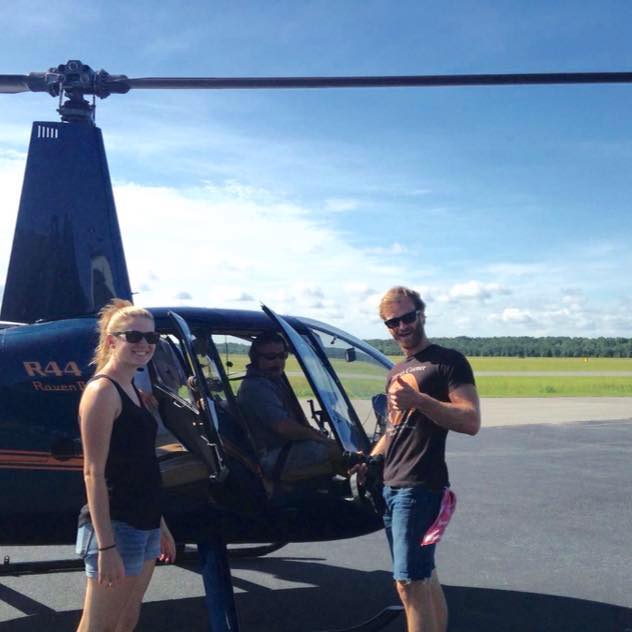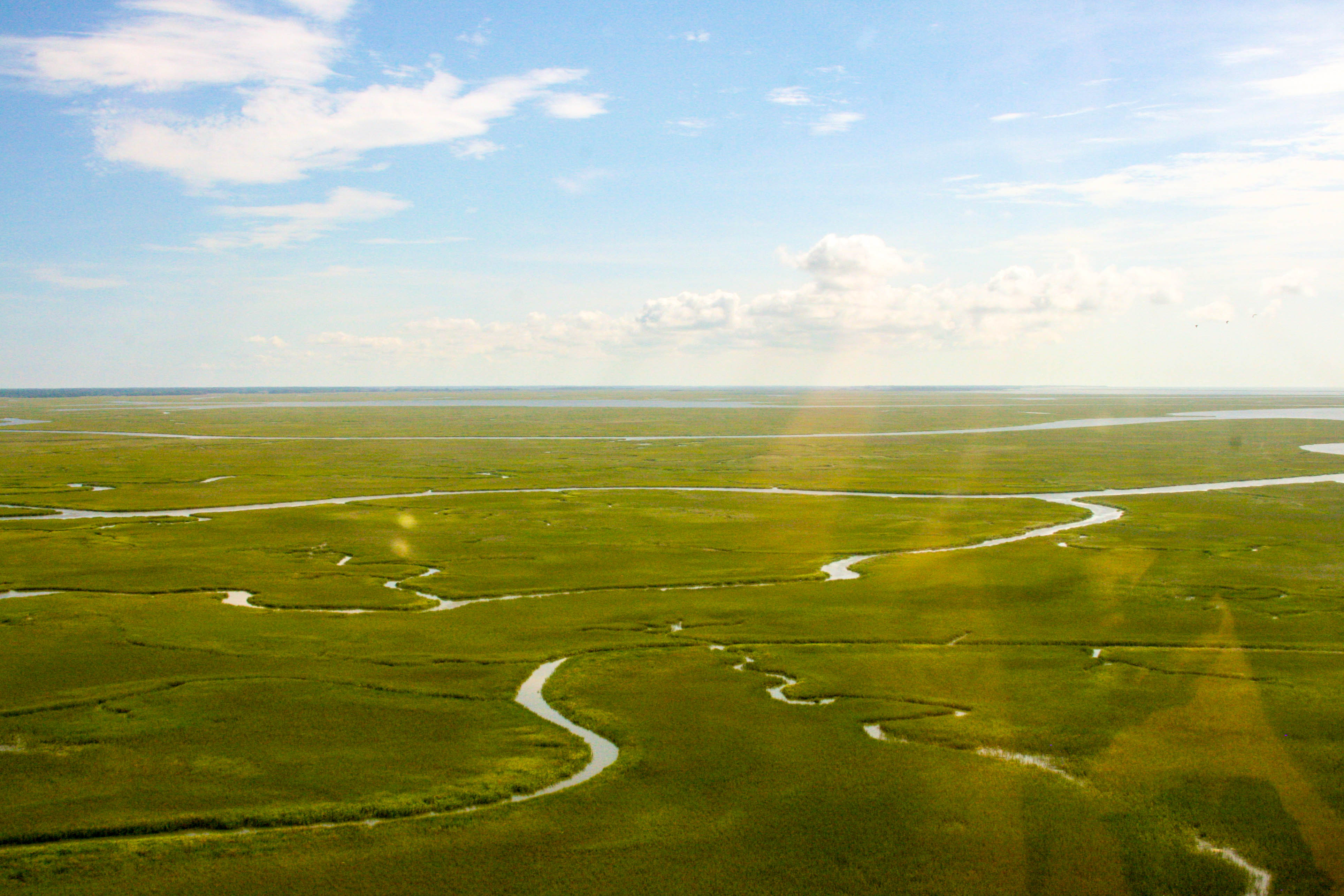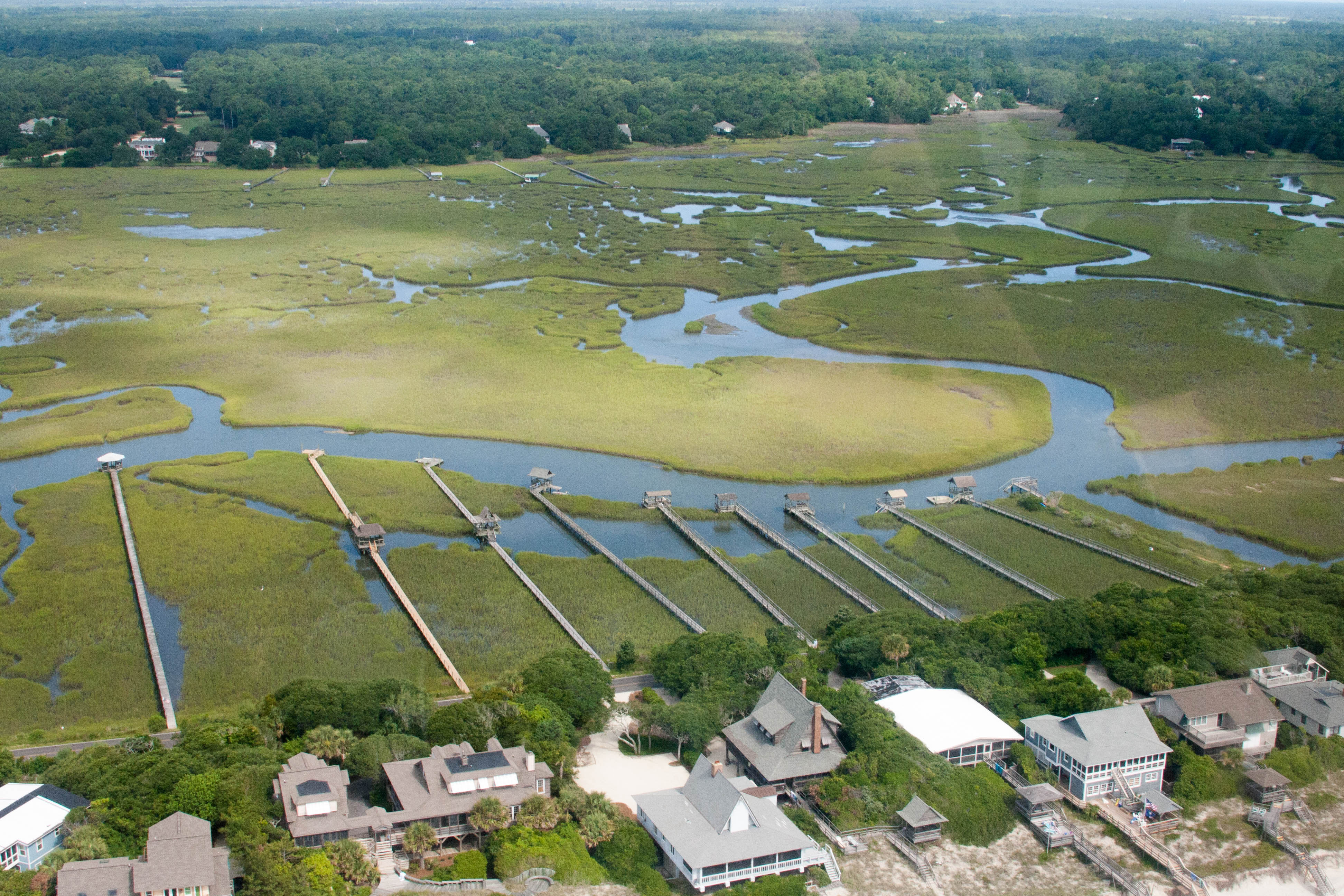This post is largely inspired by a post by a friend of
mine that
inspired me to start writing reviews and summaries of (nonfiction) books
I read.
I just finished reading Influence: The Psychology of
Persuasion by
Robert Cialdini. I picked up the book after seeing it mentioned several times
on Hacker News and Reddit, the irony of which didn’t dawn on me until I had
finished the book. The genre of accessible books on results in
experimental psychology has been a favorite of mine since reading one of
my favorite books, Thinking, Fast and Slow, and this book did not
disappoint.
The subject matter of Influence is the “weapons of influence” used by
what Cialdini calls compliance professionals - salespeople, politicians,
and anyone else who can benefit from manipulating people into
compliance. More generally, it explores shortcuts or weaknesses in all
of our minds that can be exploited to get us to agree to something
without giving it full thought. As evidenced by the testimonials on the
dust jacket (also slightly ironic given the results within), the book is
very interesting to marketing and sales professionals, but it also has
value for anyone looking to make better decisions about pretty much
anything that someone might talk you into. I’ve included my
chapter-by-chapter summary below, along with some commentary of my own.
One interesting thing about the results that I didn’t find in the book
is that, at least in a sales setting, some of the “weapons” apply at different
times than others. For example, “social proof” is largely used to
influence people near the top of the funnel, while “scarcity” is largely
used as a closing tactic. It would be interesting to categorize all the
results in this space in that way, and create a taxonomy of the
compliance tools from the perspective of different types of persuasion -
political campaigns, sales manuals, marketing strategies, religious
indoctrination, the techniques of pick-up artists, etc. In other words,
flip the layout of the book around and show how the different techniques
are used at different layers of the processes. Future work?
Influence: The Psychology of Persuasion
Chapter 1: Weapons of Influence
Many animals exhibit fixed-action patterns, sometimes complex patterns of behavior that
are reliably activated by an often simple trigger.
Mother turkeys’ protective, maternal behavior is
triggered by a specific “cheep-cheep” sound produced by their young;
however, they can be tricked into acting motherly to a stuffed version
of a natural predator with an embedded tape player that makes the same
noise.
Humans have a similar response, though the mechanism is more complex and is often learned. In
both cases, the behavior triggering is a shortcut of sorts, a
usually-correct way to respond to a situation without cognitive load.
Much of the time, the shortcut works well, but often it can be
exploited or misinformed. Particularly as our daily lives become more
information-rich and we are faced with more choices, these shortcuts are
crucial to living happy lives. We need tools to help us understand when
the shortcuts are engaged and whether we should scrutinize a decision if
so. In the animal kingdom, some animals have learned to exploit the
automatic response to another species’ triggers; likewise, some humans
(compliance professionals) exploit our automatic behavior. This is
especially powerful because the results of these triggers, these weapons
of influence, are usually subtle, changing our actions without our
conscious knowledge.
Each of the next six chapters presents one weapon of influence in
depth.
Examples and results.
- People are more likely to grant you a favor if you
provide a reason; however, the reason doesn’t have to be a good one, and
we instead will respond to the word “because” regardless of the reason.
- People have a shortcut that tells them “expensive = good”.
- The contrast principle states that if we are exposed to two
items in sequence, if the second is different from the first our
perception will amplify the difference. This can be used to sell by
introducing an expensive item before a less expensive one - the second
will seem like a deal, or for upsells where a small add-on item seems
insignificant in the face of a large purchase.
Chapter 2: Reciprocation
The rule for reciprocation states that we feel obliged to repay anything
another person has provided for us in a similar way. This rule is
pervasive across human cultures, and the sense of obligation it creates
is very hard to resist and is thus very powerful. It can overcome
feelings of dislike or unwelcomeness, and it applies in all sorts of different situations.
Another aspect of the power of the rule lies in the fact that anyone
can offer us a gift, creating an uninvited but powerful debt the
receiver feels obligated to repay. In other words, there is an implied
second rule: an obligation to receive; as a result, the power to create
the feeling of debt is in the hands of others, making it easy to
exploit.
There is another type of asymmetry to the rule as well. There is
considerable flexibility in the obligation to return a rule “in a
similar way,” and this can be exploited by compliance professionals to
produce better returns than the gift offered. By asking for something
specific while within the time frame of the rule, a calculating
individual can get a response that is much more valuable than their own
outlay.
Another manifestation of the rule is the obligation to make a concession
to someone who has offered one. This, combined with the contrast
principle, results in a combined technique - rejection-then-retreat. In
this technique, a compliance professional makes a larger request,
likely to be denied, in order to set up the smaller target request. The
combination of the contrast of the smaller and larger requests along
with the obligation to return the concession often results in a “no”
becoming a “yes”. The smaller request doesn’t need to be small for this
to be effective. This technique makes it hard to lose - you can either
sell the big ticket, or you can retreat and have a high chance of
selling the small ticket. Additionally, by giving a concession in
response, one will feel more responsible for and happy with an
arrangement. This likely has to do with the principle of commitment and consistency in the next chapter.
The best way to protect ourselves from the rule of reciprocation is not
to refuse every gift we are given. Instead, we should seek to recognize
when a gift is being used as a compliance device. In those situations,
we can redefine the gift as what it is - a compliance tactic - and
evaluate the rest of the situation as though we would had the gift not
been given.
An interesting idea is to combine rejection-then-retreat with further
contrast-principle-utilizing upsells. By tacking on extra items, it may
be possible to turn the small-ticket item - which the prospect now feels
somewhat obligated to accept - into a large ticket sale.
The rule of reciprocation has been
theorized as one of the key points in the development of sophisticated
human cultures. It produces a kind of trust between individuals,
allowing them to establish relationships without fear of loss.
Reciprocation seems like its best used at the crux point of a situation
- at the buy decision, basically.
Examples and results.
- Christmas cards sent to random people often resulted in Christmas
cards back, even though the people didn’t know the sender.
- Bringing a random acquaintance a Coke resulted in the acquaintance
purchasing more raffle tickets than if they didn’t recieve a Coke.
- Hare Krishnas offer (push, really) a small gift, usually a flower or
book before asking for donations.
- Politician back-scratching creates a sense of obligation for a
future favor. Individual and corporate gifts to politications may also attempt to trigger the reciprocity
rule.
- “Free samples” aren’t really free - they expose the public to
the product, but they can also trigger the reciprocity rule.
- Rejection-then-retreat A retreat from a denied, significant request often results in the retreat
from the “no.”
- Rejection-then-retreat to get the names of friends the salesman can
use if a prospect doesn’t want to buy.
- Watergate was (sort of) rejection-then-retreat from an earlier, more
harebrained scheme.
Chapter 3: Commitment and Consistency
We feel a very strong desire to be consistent with our past actions. We
are often unaware of this desire though, resulting in behavior that is
outside what logic would dictate. This slavish consistency with our own
actions is triggered by a commitment to a course of action, particularly
a commitment we perceive as public. In a way, these commitments alter
our own image of ourselves, which is a subtle force in all future
actions. This quiet power, combined with the automatic nature of the consistency response, makes
commitment and consistency a major tool for compliance professionals,
and one that is hard to resist.
Written commitments have particularly strong power over us. In general,
the more active a commitment is, the more effort required to make it, and the more public it is, the more powerful
it is. In order to really internalize a commitment, we must accept it as
our own behavior, which means we can’t attribute it to an external force
such as a large prize. By internalizing our commitments, we build
additional structure to support our decisions, and this can be
exploited. By initially providing and withdrawing a good reason to make
a decision, compliance professionals can urge us to the decision. The
key lies in providing enough time to justify the decision to ourselves
for other reasons.
To avoid letting our consistency be exploited, we don’t eliminate
consistency - it is a valuable tool for eliminating cognitive load.
Instead, we have to rely on our intuition. If we feel, deep inside, that
we are being foolishly consistent we need to take the time to more
carefully evaluate the situation and produce a response based on logic
rather than one based on consistency.
Consistency seems like it is best used at the marketing phase, when it
is the least obvious and therefore the least easy to avoid. Because its
effects penetrate far into the future and result in deep internal
changes, an early commitment can result in far-reaching effects.
Obviously, it is also applicable later in the cycle, but the effects are
easier to ward off.
Examples and results.
- American POWs during the Korean War were convinced to write anti-American or pro-Communist
essays and do all sorts of things based on some sophisticated
commitment mechanisms employed by the Chinese.
- Horse race bettors are more confident in the chance of their horse
winning after placing a bet than before.
- A bystander was much more likely to stop a thief if asked earlier if
they would watch the belongings.
- Toy manufacturers create artificial demand for specific toys around Christmas,
then limit availiability until after the holidays. Promises to
children result in sales later.
- Getting people to abstractly commit to charitability
on the phone earlier results in much better results if asked
to volunteer later.
- A commitment to driver safety resulted in a large number of people
agreeing to put up a billboard in their front lawn.
- Testimonial contests encourage all who apply to believe in the
product they are writing about.
- Writing down an estimate results in a much stronger commitment to
it.
- Hazing rituals inspire individuals to have very strong commitment to
the cause for which they are hazed (effort results in stronger
commitment).
- Children will better internalize lessons that aren’t accompanied by
a threat (or, presumably, a reward). This may be different for
different children.
- Lowball Offer a car for a low price, then wait a while, the
retract the offer. People will build up their own reasons for
agreeing to the purchase in the first place.
- Performing an interview that encourages the person to respond in
ways favorable to the overall goal - for example, an attractive
woman interviewing men about their social habits in order to sell
Zagat’s or something - then asking for the sale.
Chapter 4: Social Proof
The principle of social proof states that when we are confused about
the best course of action, we take our cue from the actions of those
around us. Like many of the other weapons, it serves a valuable purpose
but becomes an issue when we respond to it automatically, regardless of
other factors, such as whether the social proof is genuine or false.
Often, the “social proof” we are actually getting is the result of a
group of people all looking for social proof and trying to play it
cool. This leads to “pluralistic ignorance,” in which a whole group
reads the wrong social cue. This is likely the cause of bystander
inaction. The two key drivers for social proof are uncertainty, which
motivates the examination of social cues in the first place, and
similarity, in which we prefer to take our cues from those most similar
to ourselves.
In order to best protect ourselves from false social proof is to be
sensitive to when the cues we are receiving are incorrect. This can
occur because the social data has been made up - such as in the case of
a “man on the street” testimonial for a product - or in the case where
social proof is being interpreted incorrectly in a recursive way by a
growing group - as in the case of bystander inaction.
Examples and results.
- Canned laugh tracks are attempting to make you laugh via social
proof.
- Bartenders throwing a couple bucks in the tip jar at the beginning
of the night.
- Advertising and marketing techniques claiming things are ‘fastest
growing’ or the like and man-in-the-street interviews and
testimonials are meant to engage the principle of social proof.
- Children who see other children playing with dogs are way less
likely to be scared of dogs, even if they see the other children in
a video.
- Pluralistic ignorance When a group of people are all attempting to
read social cues but end up reading everyone else playing it cool
while they try to read the crowd.
- Bystander inaction is an example of pluralistic ignorance: everyone
is trying to evaluate the situation, but mistakenly reads the
others’ calmness as indicating that the situation is fine.
- Three-person groups are less likely to report a likely fire than
individuals, particularly if the group contained people instructed
to ignore the smoke.
- Uncertainty triggers the need for social proof: when someone is
clearly hurt, people almost always help even if it is dangerous;
however if it is unclear that there is an emergency, far fewer people
help when there are other people not helping.
- To get help in a crowd, single someone out, tell them you need help
and ideally tell them what help you need.
- Similarly: school anti-smoking efforts are much more effective if
lead by peers.
- Werther effect Public evidence of a suicide, such as reporting in
papers or the news, results in other people committing suicide. The
imitation suicides are often committed by people similar to the original
victim. This may also be true of homocides.
- Cult suicides are often rooted in social proof. The People’s Temple
suicides were thought to be largely a result of Jim Jones moving
the cult to Guyana, making the only similar people around the cultists
themselves.
- Claques are groups of opera-goers that are paid to applaud - canned
applause for live shows.
- Traffic jams are sometimes caused by two drivers signalling to get
over, which drivers behind interpret as social proof of a lane
blockage further up.
Chapter 5: Liking
Unsurprisingly, we are more likely to comply with the requests of people
we like. This liking can take the form of friendship or another existing
relationship, or it may be as
simple as one of a number of factors that cause liking quickly and
reliably without the development of a deeper relationship. These factors
include physical attractiveness (how good looking is the person?),
similarity (in what ways is the person like us?), compliments (how much
does the person seem to like us?), contact (how familiar are we with the
person or the request?), cooperation (how much help have we given this
person?), and conditioning / association (what other things is this person
or request like? what are they associated with and how do I feel
about those things?).
Compliance professionals leverage our close relationships to gain
compliance via association with our friends and family. They also
leverage the factors above by making us like them in order to tap into
those feelings. In order to resist the automatic effect of these
feelings of liking, we need to notice when we are liking someone more
than we would expect, or when that liking is being inspired in the
context of a compliance request. The stronger the feeling, the more wary
we should be. Once we notice the feeling, we must try to distance our
liking from the compliance request in order to make the best possible
decision.
Examples and results.
- Tupperware parties and their ilk leverage our friendships to sell
products.
- Halo effects When one positive characteristic of a person or thing dominates
the perception of that person or thing.
- Example of attractiveness: attractive candidates got more than twice
as many votes as unattractive ones, but the voters didn’t think the
appearance of the candidates mattered to them.
- Attractive criminals receive lighter sentences than ugly ones.
- Example of similarity: Studies show that we are more likely to help people who dress like
us. Another: salespeople find similarities with us in our background
or interests.
- Typically people prefer a photo of themselves that is flipped
horizontally because it matches their image of themselves - the one
they see in the mirror every morning.
- In contrast to the contact theory, school desegregations often
result in negative race relationships because of the nature of the
environment. However, forming cooperative groups in which students of
different races work together has promising results (cooperation vs.
contact).
- Good cop / bad cop works on several principles: contrast and liking.
- Example of association: people often personally dislike the
weatherman for delivering bad weather news. Another: (presumably
straight) men who see car ads with good looking women thing the car is
faster, better looking, and better designed.
- People perceive things as more favorable while they are eating.
- Sports fanaticism can be seen as a case of trying to associate
onesself with the city or team’s success; likewise, sports fans
distance themselves from recently unsuccessful teams.
Chapter 6: Authority
We all have a ingrained feeling that we have a duty to authority. This
feeling is very powerful, and applies to situations where, as outsiders,
we would never think it would, such as inflicting pain to others.
Furthermore, this feeling of duty is very robust, and persists even when
obedience clearly means doing things we find distasteful. Interestingly,
the actual authority is less important than the perceived authority.
In other words, we respond to people in doctors coats, not to the MD.
Titles, dress, and other trappings of authority (expensive cars,
uniforms, etc.) all play into this sense of authority.
Resisting this effect is complicated, as, like many of the weapons of
influence, it often happens without us noticing, and we are often
unaware of how powerful its force is. Additionally, it often provides
the correct information - doctors, lawyers, and the like often have
guidance that is better than our own. The trick is to first carefully evaluate
when we are dealing with real authority. If the authority is false, we
can react accordingly. If it is real, we need to evaluate how likely it
is that the authority is dealing with us truthfully. We can use other
information and our own intuition to make this evaluation.
Examples and results.
- Milgrim experiments Under a wide variety of conditions, people
were willing to inflict pain on other people when prompted by an
authority figure.
- Brian Wilson laid on railroad tracks to protest shipment of weapons
to Nicaragua; the soldiers running the train ran over him.
- Trained nurses will often follow the directions of a doctor, even if it’s
on the phone and the request flies in the face of their training.
- Sanka advertisements use an actor who portrayed a doctor to extol
the benefits of decaf coffee.
- This that are important are perceived as being larger; the reverse
also holds true.
- People on the street are more likely to comply with an odd request
if the requester is dressed in a guard uniform.
- People are less likely to honk at bad drivers in nice cars.
Chapter 7: Scarcity
The perceived value of an opportunity is inversely proportional to its
availability. In general, loss is more motivating than gain; for each
person, the multiple is different, resulting in a spectrum of
risk-oriented behavior. Both first-order (how rare is X?) and second-order
(is X becoming rarer?) scarcity affects our perception. Compliance
professionals can artificially limit availability or create the
perception of limited availability to gain our compliance.
Alternatively, they can create deadlines for an opportunity in order to
take advantage of our scarcity response.
The theory of psychological reactance posits that the loss (or impending
loss) of our freedoms increases our desire for those freedoms and
associated goods and services. This may be the source of the “terrible
twos” in which toddlers can’t seem to be satisfied: any change in their
state results in some perceived loss of freedom. This also may be the
cause of hoarding in response to limits imposed on ownership of an
object (e.g., incandescent bulbs fairly recently). This type of hoarding
also extends to censorship - the limiting of free access to information
- and to judges’ instructions to disregard certain evidence presented.
The combination of this information scarcity with opportunity scarcity
is a powerful compliance tactic: let the mark know that the information
about the scarcity of the opportunity is itself limited, insider
information.
Evidence suggests that combined first- and second-order scarcity
produces a stronger response than either alone. Specifically, things
that are newly scarce are perceived as being more desirable than things
that have been scarce for some time. Another condition that heightens a
feeling of scarcity is when the scarcity is caused by an observable
demand. In other words, when we see the demand that is causing the
scarcity, we desire the opportunity more.
To escape our scarcity response, we must first identify the increase
of desire caused by scarcity. When we find ourselves in that situation,
we need to consciously distance ourselves from the desire to possess
the item and evaluate the intrinsic value of the item instead.
Because of the short-term effects of scarcity, it seems like it is most
applicable in the ‘close’ phase of a transaction, after the initial
interest but while the item is still being evaluated.
Examples and results.
- The desire to answer a phone call when someone is physically with
you is the scarcity principle at work.
- Collectibles are often valued on their scarcity; arguably the whole
joy of collection is in possessing scarce items.
- “Limited number” and “limited time offer” are both compliance
tactics utilizing scarcity.
- Psychological reactance We react to the loss of behavioral freedoms by
desiring to perform the limited behaviors.
- Toddlers prefer toys that are blocked by an obstacle.
- Romeo and Juliet is an example of scarcity in effect - the parental
direction to end their affair strengthened their desire for it.
- After limiting a certain kind of detergent in Florida, residents
hoarded it. Additionally, they rated it as better than other
detergents.
- Hearing that a speech proposing a certain topic would be banned,
more students supported the topic itself.
- Young people seeing an age-restricted book desired it more and
thought they would like it more than the non-age-restricted version.
- A UChicago Law School study found that jurors awarded more to a
woman injured by a careless driving defendant if the defendant had insurance -
and yet more if they were told to disregard that he had insurance.
- A study had participants rate cookies under several conditions;
scarcer conditions produced better ratings in this order (least to
best average rating):
- Ten cookies in the jar
- Two cookies in the jar
- Ten cookies in the jar, but then eight were removed in front of
the participant, saying the experimenter had made a mistake
- Ten cookies in the jar, but then eight were removed in front of
the participant, saying that the other participants needed them
- Riots often result from degrading conditions, not necessarily bad
ones - race riots, Gorbachev’s coup, etc.
- Bringing in a second buyer - real or not - often motivates the sale
of a scarce resource (homes, appliances, cars, etc.)
Epilogue: Instant Influence
A common theme in all the weapons of influence is that we often make
decisions based on a very limited subset of the information we have.
Unfortunately, our modern lives all but require us to do this to
function at a normal level. All signs indicate that this frantic pace is
increasing rather than decreasing, which means we need to be ever more
reliant on these shortcuts. Unfortunately, these shortcuts can be
exploited by people playing outside of the rules of safe evaluation. In
this case, we should actively counter-attack: don’t buy products
leveraging these weapons in an unfair way; boycott television that uses
canned laughter; don’t vote for politicians that exploit us. We need our
shortcuts to survive, and we need to out and ultimately stop those who
would exploit them.










2016 Year in Review